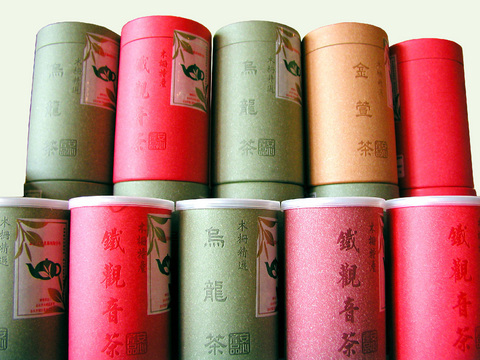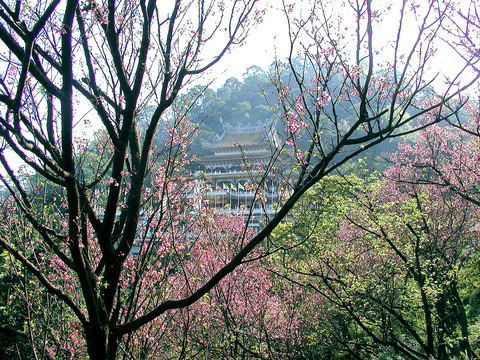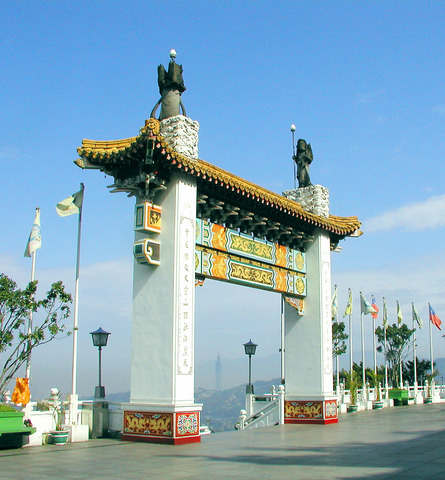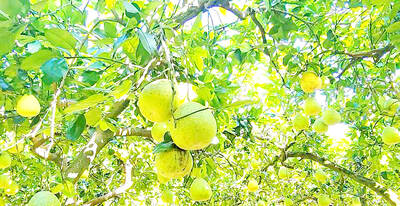One of Taipei's greatest advantages is that when the need to get away from it all becomes overwhelming, then hopping on the right city bus will usually do the trick to leave the hustle and bustle behind and soak in a bit of nature. That was my objective on a recent weekend: to escape the city using only city buses, and Muzha, I discovered, is the ideal place to do just that.
At the southern edge of Taipei City, Muzha can feel at times light years away from the cosmopolitan glass-and-steel vertical jungle of downtown, though they are, in fact, only a few kilometers apart. The district, with its narrow roads, elderly population and the predominance of Taiwanese over Mandarin being spoken, feels almost like a southern rural village roped into the city. New modern high-rise apartments springing up suggest Muzha may yet be fully co-opted into the city, but for now, its mostly squat, humble apartment blocks provide some human scale to neighborhoods and views of the nearby hills that form the southern rim of Taipei's basin. And from almost every point in Muzha one can see the imposing Chi-nan Temple (指南宮) perched atop the mountain for which the temple is named.
Aside from being a major worship location for Daoism in Taiwan, Chi-nan Temple is also the nexus of a network of hiking and biking trails that spreads out over the hills from Nangang on the eastern edge of Taipei all the way southwest to Sindian. Starting in Gongguan, the 530 bus runs directly to the temple, from where a coin toss can decide whether to head in the direction of Shenkeng to the northwest, or through the tea farms of Maokong and eventually over the hills and into Sindian. My coin told me Sindian.

Magical Maokong
From Chi-nan Temple, a quick stroll along the road out the back of the complex leads to Maokong, formerly one of the main tea-producing centers of northern Taiwan that was allegedly named for the holes worn into the valley's streambed that locals said looked as though they had been dug by a cat. Things have changed considerably since the area's tea-producing heyday in the late 19th century, as most of the farmers on the mountain have long since given themselves over to the lucrative restaurant and teahouse businesses that attract car-driving throngs on weekends.
For this reason, hiking through Maokong is best enjoyed well before noon on weekends to avoid fleets of aggressive drivers on the winding, narrow mountain roads. Most of the hiking, however, can be done off paved roads and on established trails trod down by intrepid contingents of mountain bikers and teams of senior citizens who can be seen hiking in orderly rows zigzagging up and down the hills in the morning hours.

From Chi-nan Temple, following the Dacheng Dian trail and then linking up with the Taipei Tea Promotion Center Trail, the leisurely hiker can reach this small but interesting exhibition center in about an hour. The center features displays of Taiwan's various strains of teas, tools and machinery used in tea production and an informative multi-lingual audio-visual introduction to the history of tea production in the area. Guides from the Liu-kung Agricultural Foundation are on hand, as well, to offer introductions in Chinese and English to the center's displays and to the history of tea production in Wenshan. Open on weekends, comfortably air-conditioned and always ready to offer free cups of locally produced Tieh Kuan-yin Tea, this is understandably a popular resting spot for hikers passing through Maokong. Other options for a respite or food, or both in my case, include any of the scores of teahouses that line the road that snakes its way up the mountainside.
Cave exploring
Plenty of tea is still produced in Maokong by holdout farmers and the remainder of the hike to Sindian passes through the more picturesque of their fields, at its higher elevations, with arresting views of Taipei and, of course, Taipei 101 providing some postcard juxtapositions.

So after enjoying far too much of the tea-leaf fried rice, tea-leaf fried veggies and tea jelly and drinking too much Tieh Kuan-yin tea in Maokong, it was high time on my visit to burn off some calories by hitting the small trail that leads over the hill through an isolated glen of vegetable and tea fields to one of the best-hidden temples in Taipei. Tucked partially behind a waterfall, Yinhe Cave Temple is a tiny Buddhist structure carved mid-way up a 50m cliff that enjoys a spot in local lore for being a weapons depot for resistance fighters against the Japanese occupation at the beginning of the last century. In fact, many of the hiking trails that still exist in the area were once used by Shenkeng-based guerillas fighting the Japanese and some of the nearby peaks were used to send signals about Japanese troop movements.
I had been told that after heavy rains, Yinhe Temple becomes concealed by falling water, but scarce rain this season has left most of the temple exposed. That was a bit of a let-down because the temple itself is a rather bland concrete slab. But the reduced waterfall, nonetheless, is quite spectacular, dumping over its precipice in a jungle setting ringed by blazing pink and white azaleas that are now in bloom. A flat, concrete viewing area next to the base of the falls is a perfect picnic setting in dry conditions.
Having trekked from Chih-nan Temple, down and up one valley to Maokong and over one ridge to the waterfall, I had begun to feel that such an outing held its share of adventure. But my bubble was burst when a chipper family with hip-high toddlers in tow came into view on the last stretch of road that leads out to National Route 9 running from Ilan to Sindian. The colors of the forest, the hush of swaying bamboo groves, the sight of old men tilling fields had all led me to believe I had traveled great distances and left most of what was familiar behind. But no, it's just a family hiking trail only one quick corner out of sight from the city. I turned that corner by walking a final kilometer along Route 9 into Sindian and catching the 650 bus back to Gongguan feeling refreshed all the same.

On Facebook a friend posted a dashcam video of a vehicle driving through the ash-colored wasteland of what was once Taroko Gorge. A crane appears in the video, and suddenly it becomes clear: the video is in color, not black and white. The magnitude 7.2 earthquake’s destruction on April 3 around and above Taroko and its reverberations across an area heavily dependent on tourism have largely vanished from the international press discussions as the news cycle moves on, but local residents still live with its consequences every day. For example, with the damage to the road corridors between Yilan and

May 13 to May 19 While Taiwanese were eligible to take the Qing Dynasty imperial exams starting from 1686, it took more than a century for a locally-registered scholar to pass the highest levels and become a jinshi (進士). In 1823, Hsinchu City resident Cheng Yung-hsi (鄭用錫) traveled to Beijing and accomplished the feat, returning home in great glory. There were technically three Taiwan residents who did it before Cheng, but two were born in China and remained registered in their birthplaces, while historians generally discount the third as he changed his residency back to Fujian Province right after the exams.

With William Lai’s (賴清德) presidential inauguration coming up on May 20, both sides of the Taiwan Strait have been signaling each other, possibly about re-opening lines of communication. For that to happen, there are two ways this could happen, one very difficult to achieve and the other dangerous. During his presidential campaign and since Lai has repeatedly expressed his hope to re-establish communication based on equality and mutual respect, and even said he hoped to meet with Chinese leader Xi Jinping (習近平) over beef noodles and bubble tea. More dramatically, as explored in the May 2 edition of this column,

Tiffany Chang (張芳瑜) is a force to be reckoned with. Crowned Miss Taiwanese American in 2022, she made history last year as the first Taiwanese winner of Miss Asia USA. She’s also a STEM student at Stanford and an aspiring philanthropist — the kind of impressive accolades that has earned her the moniker “light of Taiwan.” At the end of March, Chang returned to Taipei, to “see the people that support me because ultimately that’s what made me win.” She says her Taiwanese supporters shower her with praise: “you inspire us, and you make us feel proud of our Taiwanese heritage,”